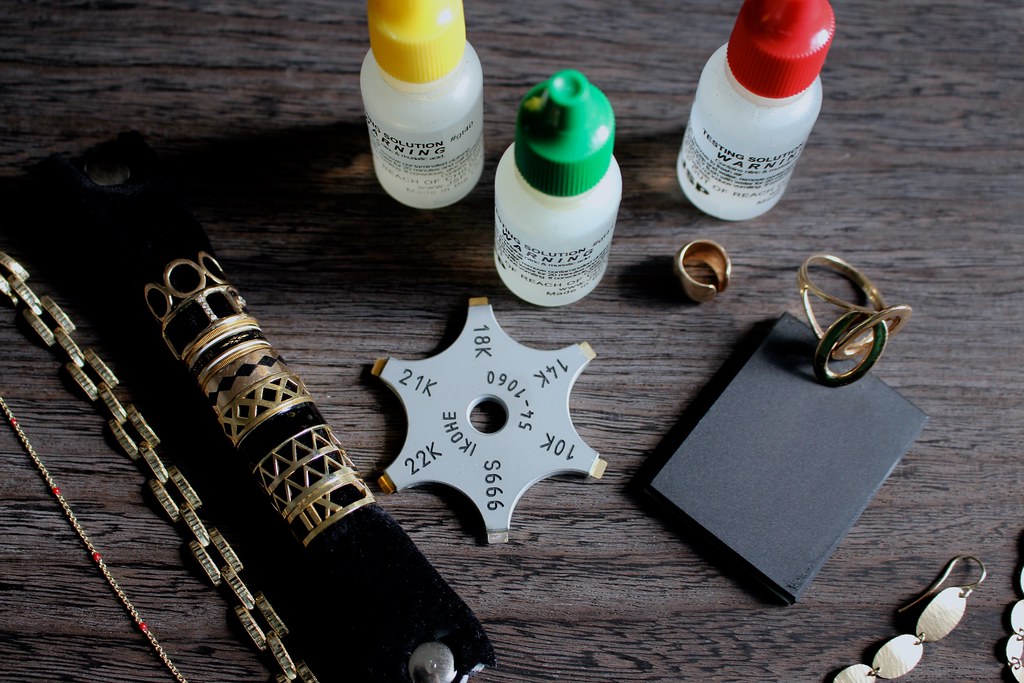
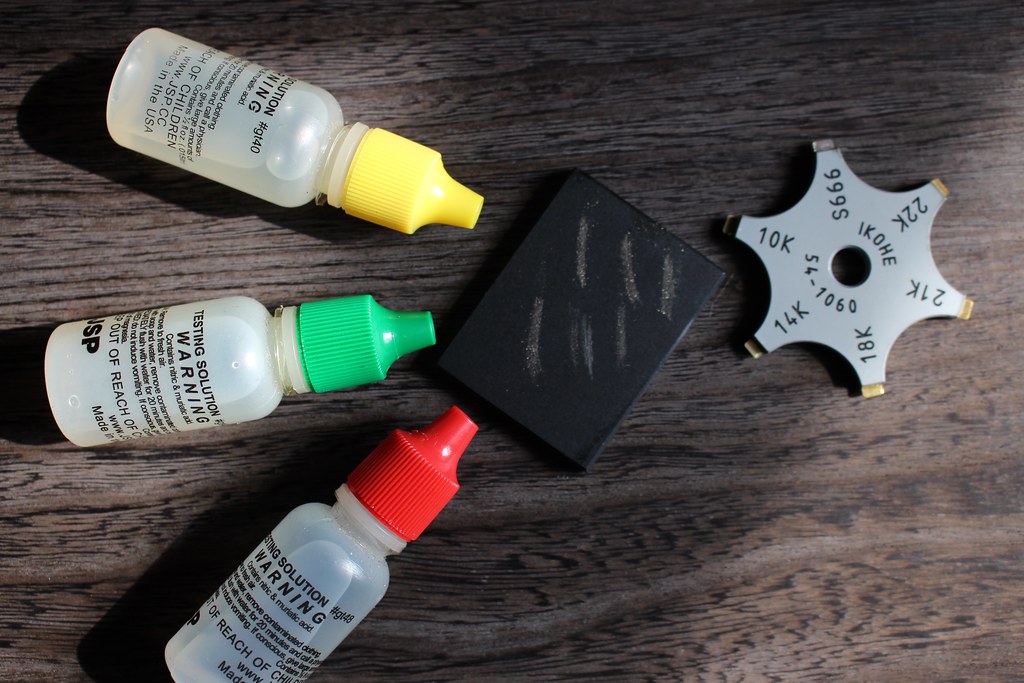
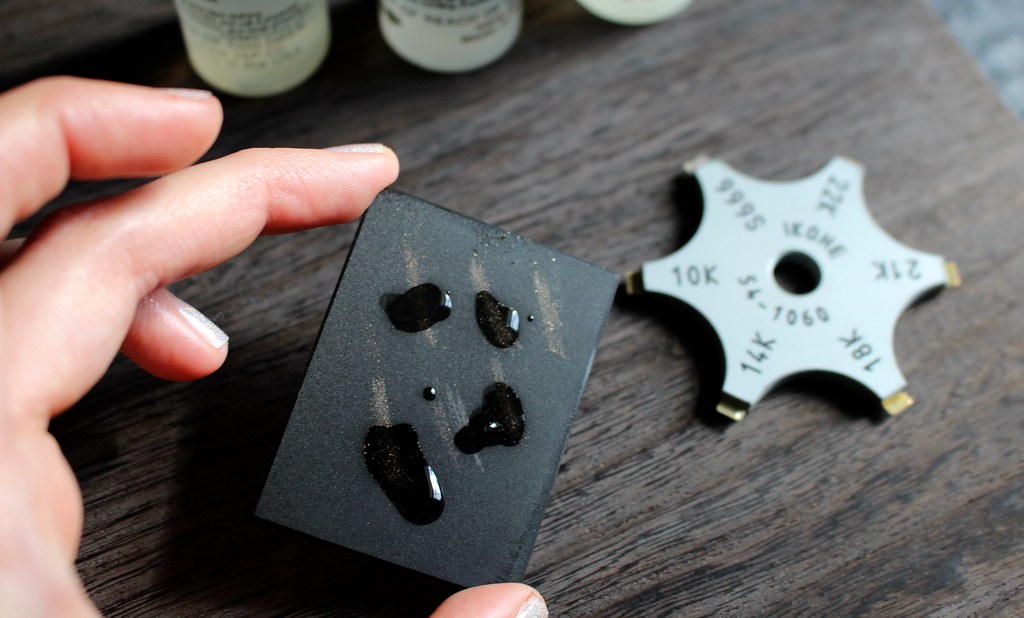
Fake gold comes in many forms. Sometimes it’s easy to spot and other times, fake gold deceives even the best of us. There are even times when jewelry has all the proper gold hallmarks, but it turns out to be a cheap (and illegal) form of costume jewelry.
Whether you’re sorting through your grandmother’s old jewelry or you found a ring on the street, you might be wondering what that jewelry is worth. The first step to doing that is figuring out whether the jewelry is made from real gold or any other precious metal.
Before you run to the jewelers, there are some things you can do at home to tell if gold is real. You’ll need a few things to get started: a magnifying glass, a magnet, and a little bit of patience.
Step 1: Look for Hallmarks
The first thing you should do when accessing a piece of jewelry is look for hallmarks. All modern fine jewelry is required to have hallmarks that indicate the gold content. There are various types of hallmarks depending on the age and country of origin.
If there are no hallmarks anywhere, don’t immediately discount the item. Most solid gold antique jewelry doesn’t have gold markings because it wasn’t always a requirement.
If there is a hallmark like 14K, don’t immediately assume the item is pure gold. For instance, 14KGF is a hallmark that indicates the item is gold filled and not solid gold. Also, some scammers have intentionally marked heavy items like gold plated chains with purity markings in order to try to sell for a higher cost. Always know who you’re buying from!
Step 2: Examine for Wear & Discoloration
The next thing you should do is take a jeweler’s loupe or magnifying glass to the item in question. You’re going to be looking for areas of discoloration or wear. Gold should age very evenly and you shouldn’t see any areas of extreme darkness unless it’s a joint where a different metal solder may have been used. Of course you will see some darkness in 10k gold pieces in antique jewelry due to the higher copper content, but this patina will be mostly even throughout.
Antique gold filled items have a relatively thick layer of solid gold on the outside. These pieces can be hard to test because for acid tests, you literally have to cut deep into the item to see if there is a base metal beneath it. If you do an acid test on or just below the surface, the item will read as pure gold.
There are ways, though, to immediately tell if an item is gold filled. If there is wear and tear on the item, search for a base metal. With a loupe, examine portions where gold would naturally rub off (like the edges) to see if there are dark areas of base metal peaking through. This will be an indication that the item is gold filled or gold plated.
Step 3: Eliminate Imposters with a Magnet
This step works well if you’re sifting through a lot of miscellaneous gold pieces. Take a strong magnet and run it across the pile. Anything that is attracted to the magnet can immediately be eliminated as not pure gold. Solid gold is not magnetic, regardless of the color or purity.
Remember, if the jewelry is not attracted to the magnet, this doesn’t mean that the item is real gold. There are other imposter metals that are also not magnetic. This test just helps rule out items.
Step 4: Try the Float Test
Gold is a very dense metal and in theory, it should never float. If you drop your jewelry into a cup of water and it floats, more often than not, the item is costume jewelry. However, a solid gold piece that is hollow and very thin may float, so don’t use this test as your only method.
Step 5: Seek out a Professional
Unless you’re in the jewelry business, we don’t recommend using the nitric acid to test for gold on your own. They sell many home testing kits online, but there is significant room for error here.
In order for this test to be effective, you need to scratch your jewelry. A professional can do much more to accurately tell you what an item is made out of before having to damage the piece. If an acid test is required, they’ll be able to inflict the least amount of damage to the item as possible.
There’s no sense scratching your jewelry only to need a professional to verify what you did anyway.
As always, good luck and happy hunting!
This post was contributed by:
![]() Lauren Thomann | I: @agelessheirlooms | W: www.agelessheirlooms.com
Lauren Thomann | I: @agelessheirlooms | W: www.agelessheirlooms.com

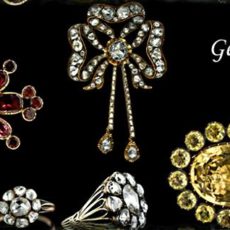
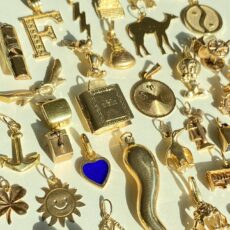
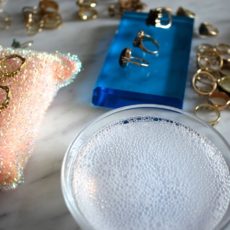


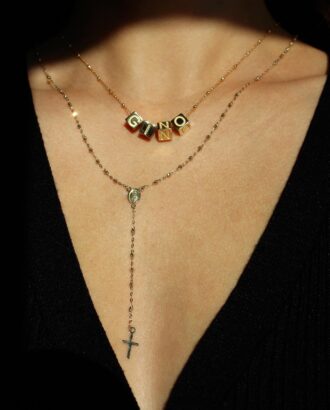
kat newkirk June 1, 2017 at 3:13 am:
there are electronic testers on the market that will identify gold and indicate what karat. and electronic testers for silver content. also electronic testers that will identify various gemstones. these are expensive unless you are sorting through a huge pile of jewelry, and come with plus/minus accuracies. but if you need to test large anounts of jewelry on a regular basis, they are worth it as a good first step.
Rheada June 4, 2017 at 10:23 am:
If for example a Mytophesian gold filled earring, how can you tell if it is not electroplate?
Harvinder June 28, 2017 at 4:27 pm:
This is such a great article! I am trying to share it via Twitter however the share button doesn't follow through. It does take me to Twitter however does not allow me to share as it does not pop up. Thank you